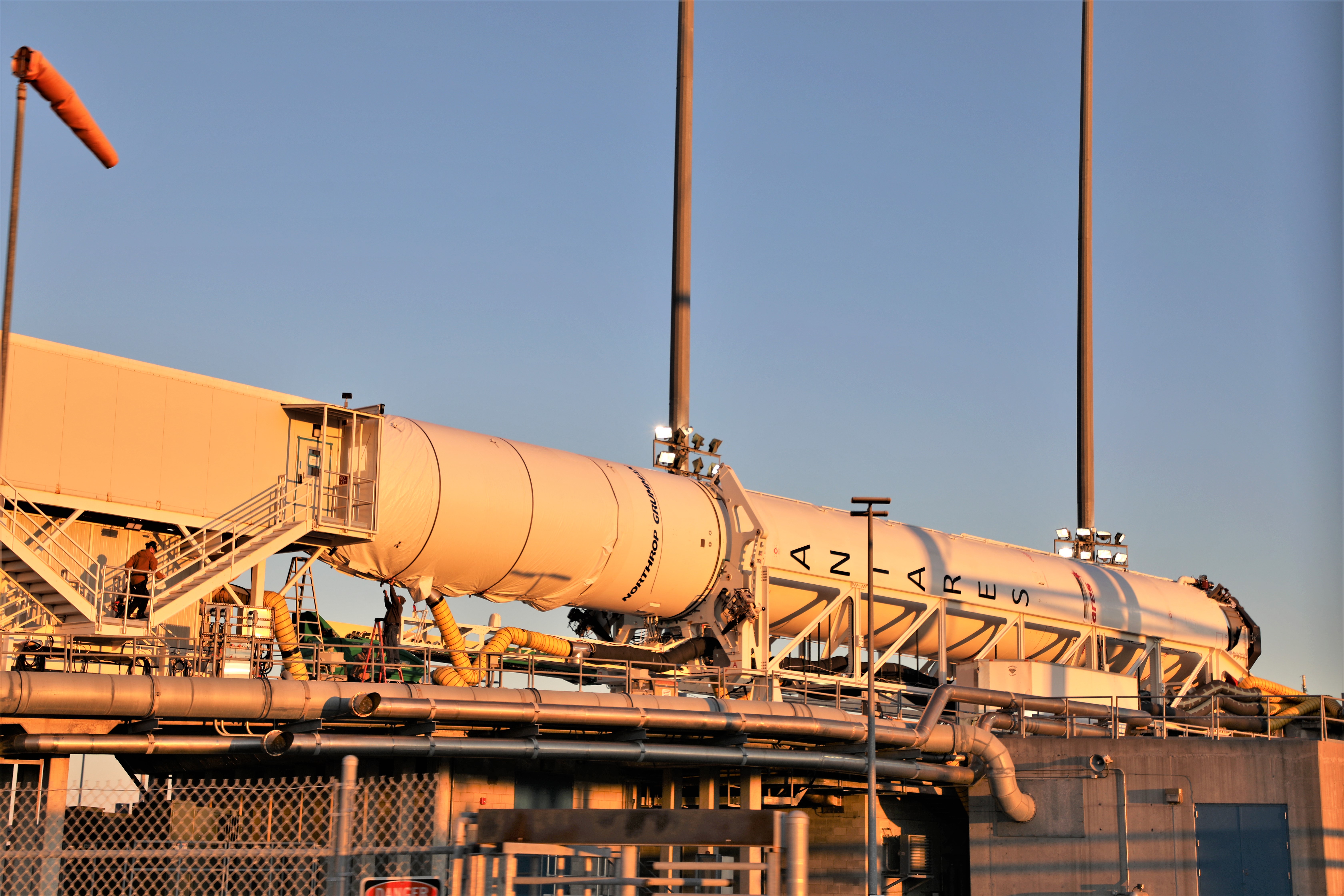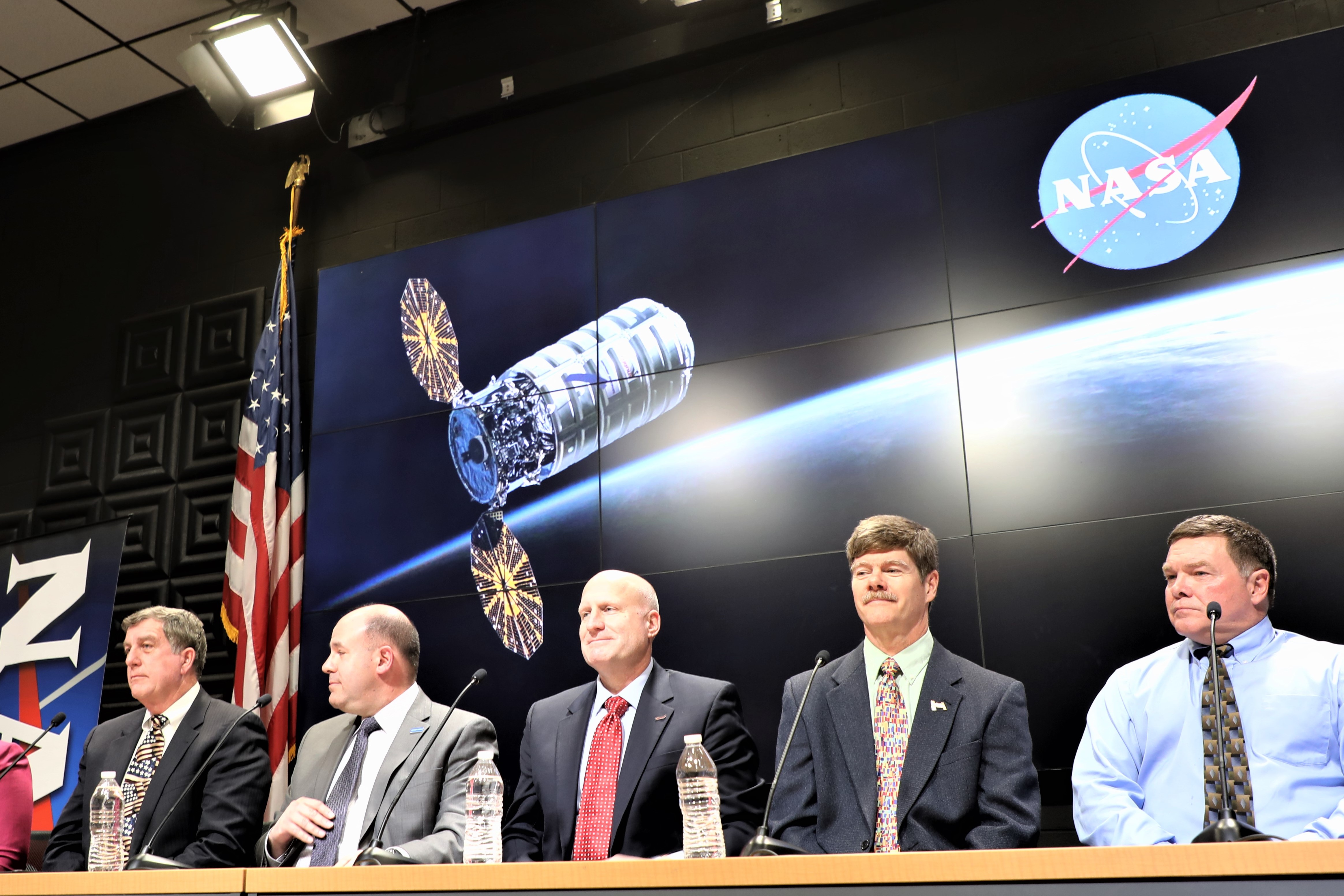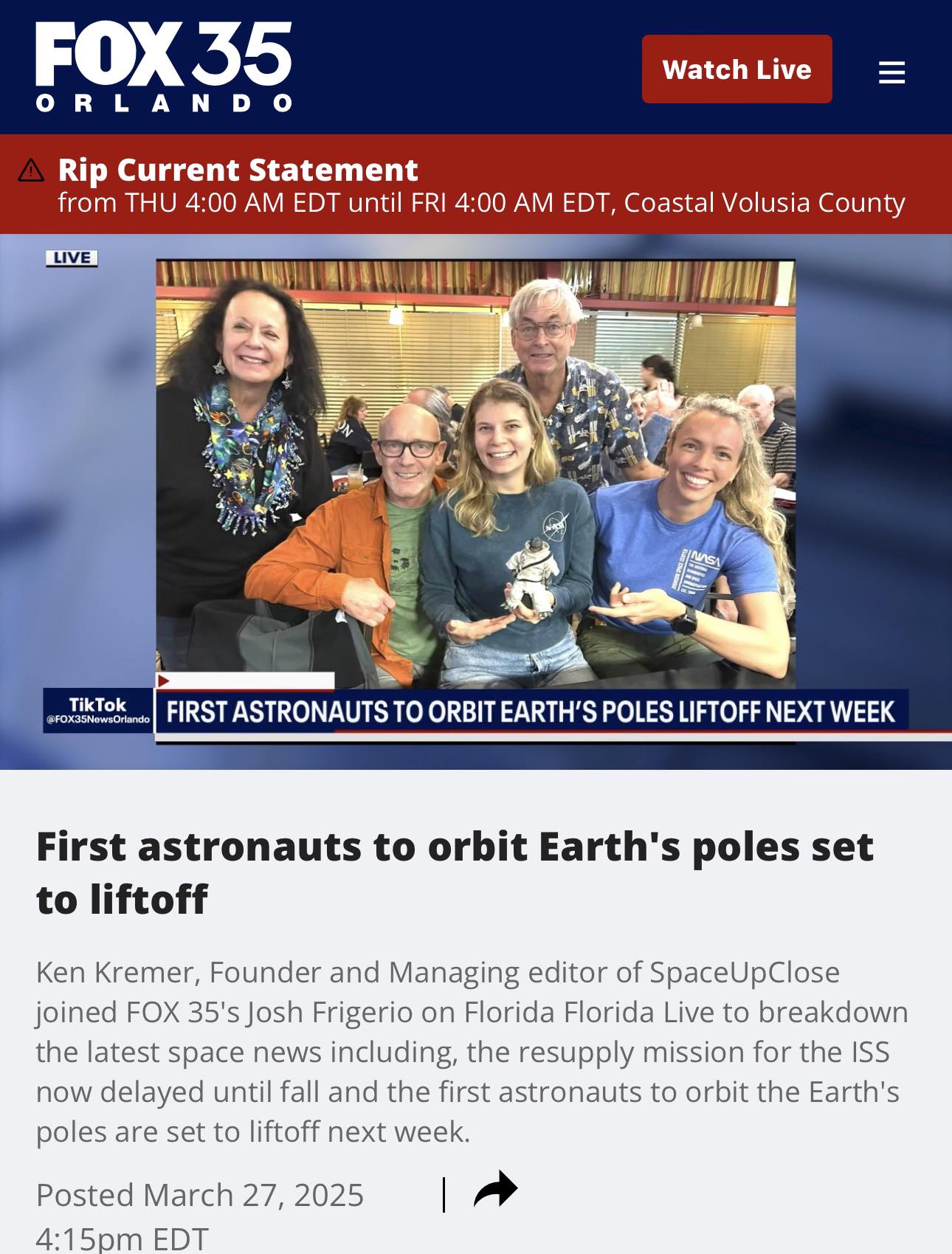
For SpaceUpClose.com & RocketSTEM
NASA WALLOPS FLIGHT FACILITY, VA – All systems are GO for the planned breakfast blastoff of the private Antares rocket and Cygnus cargo freighter from NASA’s launch base on Virginia’s eastern shore to the International Space Station on Saturday, Nov. 2 on a commercial resupply mission for NASA delivering over 4 tons of research investigations and supplies to the six person crew – and the weather is outstanding at 95% GO !!
Liftoff of the Antares Cygnus mission on Northrop Grumman’s 12th commercial resupply mission to the space station from Virginia Space’s Mid-Atlantic Regional Spaceport at NASA’s Wallops Flight Facility at 9:59 a.m. EDT Saturday, Nov. 2, 2019 from launch pad 0A.
So a beautiful sky show is potentially on tap for millions and millions of US East Coast residents – so long as skies remain clear.
Weather forecasters currently predict a 95% chance of favorable conditions at launch time with the only concern being cloud ceiling.
Sunny skies are predicted with very cool but comfortable temperatures in the 40s at launch time.
NASA aired prelaunch coverage today, Nov. 1 on NASA Television and the agency’s website with the prelaunch briefings from NASA Wallops.
You can watch the Antares Cygnus NG-12 launch live on NASA TV starting 30 minutes prior to liftoff
NASA TV coverage of the launch begins at 9:30 a.m.
The backup launch opportunity is Sunday, Nov. 3.
Enjoy our Space UpClose photos of the Antares Cygnus NG-12 rocket taken during media tours of the launch pad and our remote camera setup Friday afternoon.

The Antares rocket was resting horizontal at the launch pad this afternoon as the Northrop Grumman technicians carried our installation of late cargo load items consisting of science experiments and biological samples including mice which must be loaded about 24 hours before liftoff to ensure they stay preserved and do not degrade before ISS arrival.
Technicians use a mobile cleanroon wheeled up to the Cygnus nose cone which is equipped with a portal that can be opened for access to the spacecraft to load about ¼ of the total cargo- amounting to over 2000 pounds.

Beautiful viewing is possible along a vast stretch of the Atlantic Coast and certain inland areas from New England to the Carolinas – if clear weather persists.
The mid-Atlantic region has the highest population density in the US.
See the detailed launch visibility map below – weather permitting.

The visibility map indicates when (in seconds) and where to look up in the sky after liftoff.
The numerical values in each colored circle indicate the time (in seconds) after liftoff. This value can be used to determine when the rocket becomes visible within the associated colored region.
Thus Antares could potentially thrill hordes and hordes of space fans, just as NASA is ramping up America’s return to the Moon with Project Artemis landing the first woman and next man at the lunar south pole.
If you want to watch the launch up close consider traveling to the NASA Visitor Center at Wallops.
The Wallops Visitor center opens at 6 a.m. on launch day for public viewing. But arrive early because parking is limited at this excellent location.
Locally some additional locations for catching the launch are Robert Reed Park on Chincoteague Island or Beach Road spanning the area between Chincoteague and Assateague Islands, says NASA.
The beach at the Assateague Island National Seashore/Chincoteague National Wildlife Refuge will not be open during the launch.

The Cygnus spacecraft, dubbed the SS Alan Bean, is named after the late Apollo and Skylab astronaut who died on May 26, 2018, at the age of 86.
The Cygnus NG-12 spacecraft is loaded with around 8,200 pounds of research, crew supplies, and hardware – the heaviest ever load launched by Antares from Wallops.
Among the research hardware is an oven to bake the first ‘Cookies in Space’ as well as gear to repair the Alpha Magnetic Spectrometer experiment looking back to the origins of the Universe – for the six person multinational crew.

The two stage Antares measures 139 feet (42.5 m) tall and 13 feet (3.9 m) in diameter.
The 14 story tall commercial expendable Antares launch vehicle is launching in the upgraded and more powerful re-engined 230+ configuration rocket compared to the original version.
The first stage is powered by two newly built Russian-built NPO Energomash RD-181 engines with independent thrust vectoring and fires for 3 minutes and 35 seconds before separating from the upper stage. They are test fired by Energomash in Russia and shipped to Wallops.
They produce about 860,000 pounds of thrust, roughly 100,000 more thrust than the original Antares 100 configuration. In the past they are throttled down at Max Q to maintain core integrity.
The second stage comprises the Castor 30XL solid rocket motor producing approximately107,000 pounds of thrust. It burns for about 156 seconds.
The prior Cygnus launch on the NG-11 mission was witnessed by the largest crowd ever gathered for an Antares liftoff as the rocket soared in its upgraded 230 configuration at 4:46 p.m. EDT (2046 GMT) Wednesday, April 17 from seaside Launch Pad 0A at the Virginia Space Mid-Atlantic Regional Spaceport (MARS) at NASA’s Wallops Flight Facility in Virginia.
This will be the first mission under Northrop Grumman’s CRS-2 contract with NASA starting this fall of 2019. Under Northrop Grumman’s Commercial Resupply Services contract, the company will flew 11 missions to the ISS.
Watch for Ken’s continuing onsite coverage of the NG-12 mission from onsite at NASA Wallops.
Stay tuned here for Ken’s continuing Earth and Planetary science and human spaceflight news: www.kenkremer.com –www.spaceupclose.com – twitter @ken_kremer – email: ken at kenkremer.com
Dr. Kremer is a research scientist and journalist based in the KSC area, active in outreach and interviewed regularly on TV and radio about space topics.
………….
Ken’s photos are for sale and he is available for lectures and outreach events
Nov 23, 1 PM, Titusville, FL: “50th Anniversary Apollo 12 and NASA Return to the Moon with Project Artemis” at American Space Museum, Titusville, FL. Lecture free. Open to the public.
Website: www.spacewalkoffame.org





